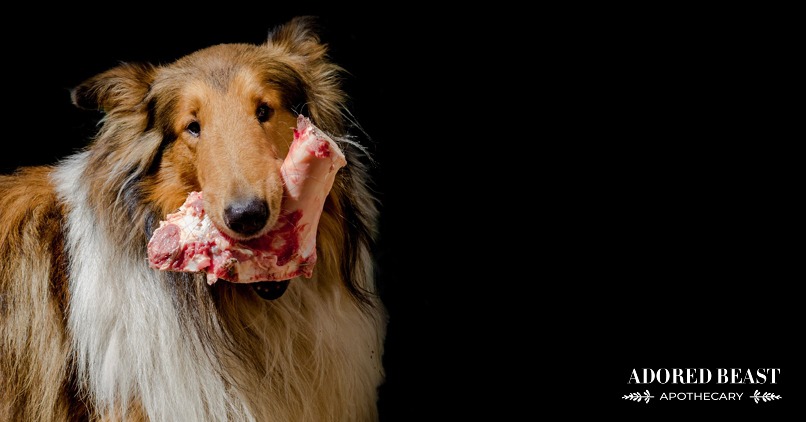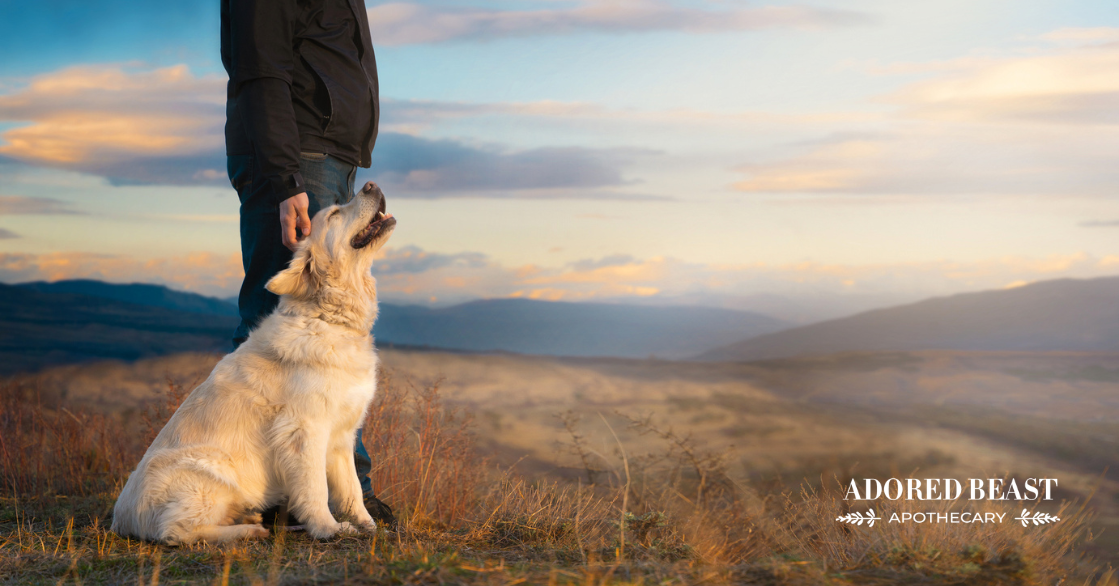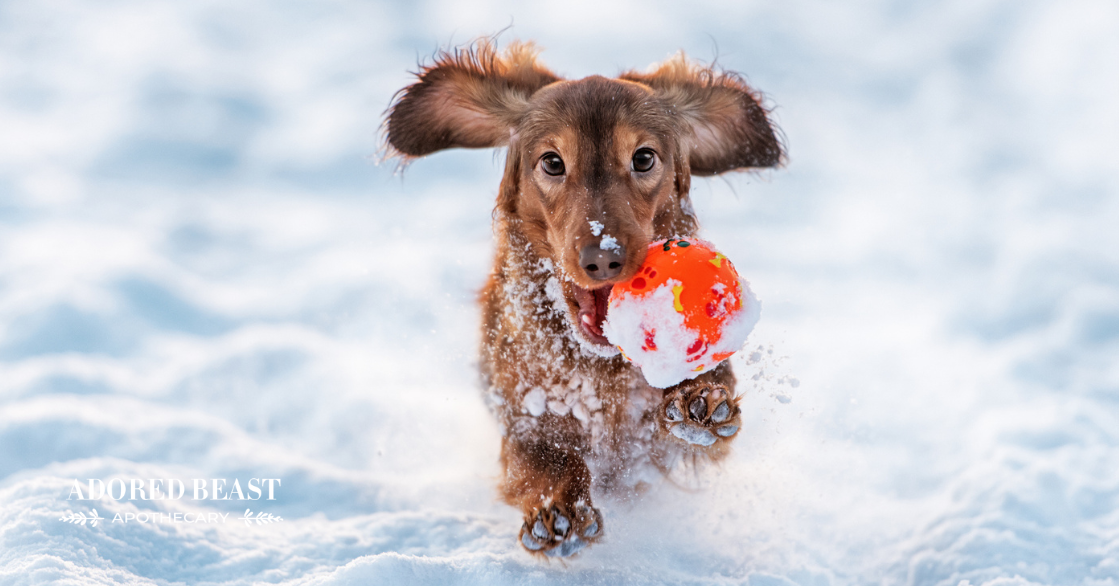Raw bones for pets are often a controversial topic. And much of this controversy stems from the fact that they are a misunderstood food option that has both pros and cons just like any other food.
However, raw bones are a natural part of canine/feline diets. When fed correctly, bones can offer a wide variety of benefits to your pet. Just like any other ingredient you add to the diet, it’s important to assess if they’re right for your dog or cat.
The Benefits of Raw Bones for Pets
To start, raw meaty bones are a rich source of minerals like calcium, phosphorus, and magnesium. In fact, the calcium in raw bones – necessary for healthy bone health – is much higher than any levels you’d find in a calcium supplement!
But it goes beyond that! Without bones, the raw diet is nutritionally incomplete. Maybe you’ve heard of people feeding raw diets which only consist of ground meat and veggies, but this can put your pet at risk for serious nutritional deficiencies.
Raw bones for pets are also a great source of entertainment for pets. Chewing is a natural activity for dogs and cats, and so a raw bone can help provide mental stimulation – which is just as important as physical exercise!
What’s more, some bones also work as a natural tooth brush to help remove plaque from the mouth. A recent study shows that RMBs are highly effective for cleaning tartar off the teeth of dogs. Bonus!
Are Raw Bones Right for Your Pet?
Pets with no health conditions are often good candidates for bone chewing. It can help them easily maintain oral health and reduce the number of dental cleanings they will need in their life. But, there are some exceptions where pets may not be able to safely chew on them:
- Pets Who Gulp or Inhale Their Food
Pets are sometimes overly enthusiastic about eating to the point when they sort of inhale their food. If this is the case, there is only one type of bone you should give to them: whole beef or buffalo knuckles. Gulpers need bones that are large enough to stop your pet from swallowing them. As long as it is whole, they can reap all the benefits without any worries.
- Pets Suffering from Severe GI Disease
Pets with inflammatory bowel disease can have limited digestive abilities. In some cases, their tummies are so reactive that they aren’t able to eat raw foods and do better on home-prepped food. If that’s the case, using raw bones might not be right for your pet until their gut has healed and they are able to digest raw foods. Addressing the GI disease is the first step to giving your pet a diverse fresh food diet.
- Pets Suffering from Chronic Pancreatitis
Pets with a history of chronic pancreatitis have a sensitivity to dietary fat. This means that you should avoid certain types of raw meaty bones to prevent flare ups. The fattiest part of bones is the marrow, so any type of marrow bone/femur bone should be a no-go. Dealing with the underlying pancreatic disease is also a really important step to keeping your pet healthy. Make sure you address this with your holistic vet or a nutritionist.
- Pets with Missing Teeth
If you have a pet with a lot of missing teeth, whole raw bones aren’t for them. Depending on how many teeth they are missing, they may not be able to chew bones the way nature intended. Make sure you assess this with a professional before choosing to feed a bone.
If your pet isn’t a candidate for raw bones or even ground bone, you’ll need to add a calcium/phosphorus source to the diet to make sure it’s balanced. The easiest way to do this is by using food-grade steamed bone meal powder. Make sure it’s food grade and tested for heavy metals. You’ll need to follow the label instructions for feeding based on how much meat you feed to your pet.
Raw Bones for Pets: A Checklist
Here are some simple rules for understanding how to use raw bones for pets safely and reap all the benefits.
1. Never Cook Them!
Bones should always be fed raw. Cooking changes the chemical structure of the bone, making it brittle, sharp, and hard to digest. It’s a dangerous health risk. Cooking also removes valuable nutrients found in the bone. Mixed raw meals that contain ground bone should also never be cooked.
2. Consumable and Non-Consumable RMBs
There are two types of bones you can give to your pet: consumable or non-consumable bones.
Consumable bones can be eaten as a meal. These include:
- chicken/duck/turkey heads
- necks and frames
- beef/buffalo knuckles
- whole fish
Non-consumable bones shouldn’t be fully eaten and are given for recreation. These include:
- beef/buffalo/lamb/boar femurs. These can only be partially eaten (e.g. cartilage, meat and marrow) and should be trashed once your pet has eaten the meat and marrow.
3. Introduce New Foods Slowly
When you make the switch to a raw food diet, it takes time for the digestive system to adapt. The microbiome, acidity levels, and GI lining adjust as you introduce the new diet. Your pet will not have full digestive capacity until they’ve been on fresh foods for at least one month. Wait the 30 days before introducing whole bones. For some pets, it may take longer. Watch poops closely to determine how your pet’s GI health is progressing. Make all diet changes gradually and with close observation of your pet.
4. Teaching Your Pet How to Navigate Bones
Chewing bones is a partially learned behavior. This means that puppies and kittens need to be taught how to handle bones. Adult dogs new to raw food must also learn to maneuver and chew bones if they’ve never had them before. Teach your pet how to chew by holding the bone for them and watching them closely as they learn.
What Bones are Right for My Pet?
This is one of the most important things when it comes to raw bones for pets. Make sure that bones are always larger than your pet’s mouth so they don’t eat it all at once! There are an array of raw bone shapes, sizes, and proteins to choose from.
Cats
- Chicken necks, wings, and backs – soft, pliable, and the perfect size for cats to chew and digest.
- Rabbit ribs or small game bones – gentle on teeth and easy to consume.
Small Dogs
- Chicken necks, wings, and backs – great for dental health and easy chewing.
- Duck necks or rabbit bones – slightly larger than chicken, but still safe for smaller mouths.
Medium to Large Dogs
- Turkey necks – meaty and supportive for jaw exercise and nutrition.
- Lamb or pork ribs – softer than beef bones and safer for regular chewing.
- Duck frames or poultry carcasses – provide a good balance of meat and bone.
⚠️ There are also many breeds of dogs and cats that may require specific types of bones depending on their size and head/facial structure. Get help from a professional if you’re not sure.
- Young Animals – Young pups and kittens who still have their baby teeth can sometimes have trouble with bones. Stick by a young pet and hold the bone and so they get used to chewing as if it’s a game. They may not be able to eat it yet but it’s great enrichment and will give them the idea at an early age.
- Senior Pets – Some seniors have had teeth removed or limited digestive abilities. For older pets, it may be more appropriate to use ground bone in raw meals rather than using whole bones. Again, it’s important to consult with a pro if you’re not sure.
- Brachycephalic Breeds – Pug-faced breeds such as pugs, bulldogs, boxers and Boston terriers may have limited chewing abilities due to their skull structure. Be sure to monitor your pet closely and spend time to observe the best bone options for him or her.
Have You Ever Had Your Dog Growl at You While They Have a Bone?
This can happen when dogs are new to bones. Some believe that raw food has created aggression in their dog. but it’s really a lot less scary than that. When pets are given access to high value foods or toys, they can get possessive if they aren’t used to having it. To pets new to raw foods, meat and bones are high value resources. If your pet growls when they have a bone or some new delicious food, it’s a behavior known as resource guarding. It’s a training issue but it often dissipates as your pet starts to understands that bones will be coming their way regularly. If it persists, get in touch with an animal behaviorist to help you solve the issue. It’s a natural behavior that you can solve easily in most cases.
If you need more help, check out the Fresh Food Consultants website to find a pro to help you with diet planning.












